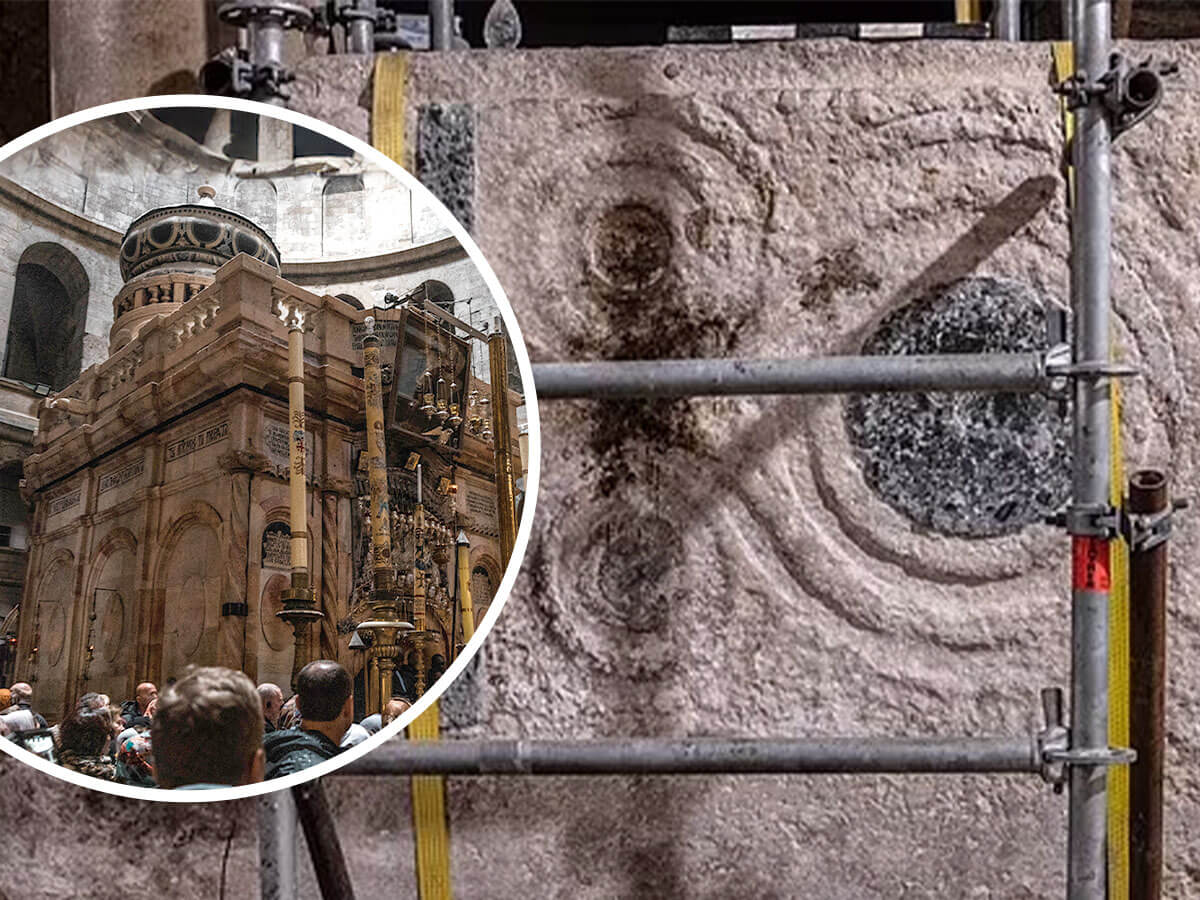
Archaeologists are sharing a surprising find uncovered at the Church of the Holy Sepulchre in Jerusalem. The Church is significant throughout Christianity as it is believed to rest on the site where Jesus was buried and then later resurrected. Construction workers were removing a heavy slab of stone that had been leaning against one of the church walls for an unknown amount of time. The stone had become an eyesore in the church, having been covered by graffiti from passing visitors. Yet when the stone was turned over, archaeologists were surprised to find that the other side was decorated in ribbon ornaments and distinctive designs.
After investigating the altar, archaeologists determined the slab must be from the Middle Ages and identified it as the Crusader’s Altar, an altar that had been consecrated in the church in 1149 to celebrate the return of Jerusalem into Christian hands during the Crusades 50 years earlier. The altar was a massive size, over 11 feet long, and caused quite a stir amongst visiting pilgrims. “We know of pilgrim accounts from the 16th, 17th and 18th centuries about a magnificent marble altar in Jerusalem,” Ilya Berkovich, historian at the Institute for Habsburg and Balkan Studies of the Austrian Academy of Sciences (OeAW) said. Yet, all that stopped abruptly in the 1800s. “In 1808, there was a major fire in the Romanesque part of the Church of the Holy Sepulchre. Since then, the Crusader’s altar was lost – at least that’s what people thought for a long time,” said Berkovich.
The design of the table is in the style of “Cosmatesque.” “A characteristic feature of this technique was its masters’ ability to decorate large surfaces with small quantities of precious marble, said researchers. “In medieval Rome marble was mainly scraped from ancient buildings, forcing the Cosmatesque masters to optimize whatever marble they could find. Their solution was to put small marble pieces together with the utmost precision, attaching it in such a way as to create complex geometric patterns and dazzling ornaments.” Researchers are hopeful to determine which “Cosmatesque” artist did these particular designs after further investigation. They were a work of art that was particularly cherished by the Pope, so much so, that this is only the second location found outside of Italy that features the style.
What makes the find so stunning is how it was sitting in plain sight for so long without discovery. “For historians, this find is a sensation in several respects,” wrote the OeAW. “Firstly, the fact that the slab could have remained hidden for so long in such an intensively researched building as the Church of the Holy Sepulchre – especially as it was in view of thousands of pilgrims and tourists every day.” The finding also shows a direct connection between Jerusalem and Rome. About two thirds of the original slab has been preserved, with the intricate circles recalling popular Middle Age symbolism to the eternity of creation and the wounds of Christ. The archaeologists hope the find will enlighten even more historical connections.
